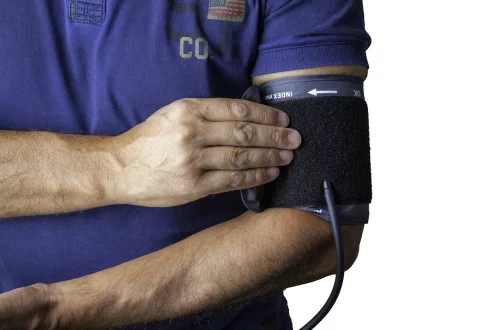
Best Positions for First Time Intercourse: A Guide for Beginners
When it comes to intimacy, the experience can be both exhilarating and nerve-wracking, especially for those embarking on their first sexual encounter. The blend of excitement, curiosity, and anxiety can make this moment memorable, but it also raises questions about what to expect and how to navigate this new territory. Understanding the dynamics of physical connection, emotional intimacy, and communication is essential for a positive experience.
As first-time partners explore their bodies and desires, they may find themselves contemplating which positions might be best suited for their initial experience. While each individual and couple is unique, certain positions can foster comfort, closeness, and ease of exploration. The right position can enhance connection and intimacy, making the experience more enjoyable and less daunting.
In this guide, we will delve into various positions that can be ideal for beginners. Each position offers its own advantages, catering to different comfort levels and preferences. Whether you are looking for something simple and straightforward or seeking a more adventurous approach, there are options available that can help ease the transition into this new phase of your relationship.
Understanding Comfort and Connection
Before diving into specific positions, it’s vital to acknowledge the significance of comfort and connection during the first sexual encounter. The emotional atmosphere plays a crucial role in how the experience unfolds. It’s essential to create a safe space where both partners feel at ease, allowing for open communication and genuine connection.
Establishing comfort starts with discussions about boundaries and desires. Partners should feel empowered to express their feelings, fears, and preferences. This dialogue not only enhances trust but also sets the tone for a positive experience. Remember, intimacy is not just about the physical act; it’s also about emotional bonding and mutual respect.
When it comes to choosing positions, opting for those that allow for eye contact and physical closeness can significantly enhance emotional connection. Positions that encourage intimacy, such as face-to-face or those that allow for full-body contact, can make the experience more fulfilling.
Additionally, consider the environment where the encounter takes place. A private, quiet space can help alleviate anxiety, allowing both partners to focus on each other rather than external distractions. Soft lighting and comfortable bedding can enhance the mood, making the experience more inviting.
Another critical aspect of comfort is taking things slow. Rushing into intimacy can lead to discomfort or anxiety. Instead, savor the moment and allow for exploration. Engaging in foreplay, such as kissing and gentle touching, can help both partners feel more relaxed and ready for the next steps.
Ultimately, the key to a successful first experience lies in open communication, mutual respect, and a focus on comfort. By prioritizing these aspects, partners can create a memorable and enjoyable encounter that paves the way for a healthy sexual relationship.
Classic Positions for Beginners
For those new to sexual intimacy, classic positions can provide a sense of familiarity and ease. Understanding these positions can help alleviate anxiety and provide a structured approach to the first encounter.
One of the most recognized beginner-friendly positions is the missionary position. In this position, one partner lies on their back while the other partner lies on top, facing them. This position facilitates eye contact and physical closeness, making it ideal for fostering intimacy. It allows for easy communication, enabling partners to adjust their movements based on comfort levels.
Another popular option is the side-by-side position, often referred to as “spooning.” In this position, both partners lie on their sides, with one partner’s back against the other’s front. This position offers a sense of security and comfort, allowing for intimate body contact and soft kisses. It’s also a low-pressure position, making it easier for beginners to relax and enjoy the moment.
Cowgirl is another position that can be suitable for first-time encounters. In this position, one partner lies on their back while the other partner straddles them, facing forward. This position allows the partner on top to control the pace and depth of penetration, which can be empowering for beginners. It also allows for direct eye contact and physical closeness, enhancing the emotional connection.
As beginners explore these classic positions, it’s essential to focus on communication and comfort. Partners should feel free to express their feelings and make adjustments as needed. The goal is to create an enjoyable experience that allows for exploration and connection.
Experimenting with Angles and Variations
Once comfort has been established, partners may feel ready to explore various angles and variations of classic positions. Trying out different approaches can add excitement and novelty to the experience, allowing partners to discover what feels best for them.
For instance, within the missionary position, partners can experiment by changing angles. Elevating the hips with a pillow or adjusting the angle of penetration can create different sensations and enhance pleasure. Small shifts in position can make a significant difference in comfort and enjoyment, so don’t hesitate to explore what works.
Another variation to consider is the “edge of the bed” position. In this scenario, one partner sits on the edge of the bed while the other stands or kneels before them. This position can create a sense of adventure and spontaneity, making it ideal for those looking to add excitement to their experience. It also allows for easy access and control, enhancing the overall experience.
Additionally, incorporating props such as pillows can enhance comfort and stability during various positions. Pillows can provide support for the back, hips, or knees, allowing partners to find their ideal angles without straining themselves.
As partners experiment with different angles and variations, maintaining open communication remains crucial. Discussing what feels good, what doesn’t, and any adjustments that may enhance comfort can foster a supportive and enjoyable environment.
Ultimately, the goal is to create a safe space for exploration and connection, where both partners feel empowered to discover what brings them pleasure.
The Importance of Aftercare
Aftercare is an essential aspect of the intimate experience that is often overlooked, especially for beginners. It refers to the emotional and physical care that partners provide to each other after intimacy. Engaging in aftercare can significantly enhance the overall experience, fostering a sense of closeness and trust between partners.
Aftercare can take many forms, including cuddling, gentle touching, or simply lying together in silence. Engaging in these activities allows partners to reconnect and process the experience together. It’s an opportunity to discuss feelings, provide reassurance, and express any concerns that may have arisen during the encounter.
Additionally, aftercare can involve practical steps such as cleaning up or taking care of any physical discomfort that may arise. This aspect of intimacy reinforces the idea that both partners care for each other’s well-being, enhancing the emotional bond.
For many, aftercare can be a time to reflect on the experience and share feedback. Discussing what felt good, what could be adjusted for next time, and any feelings that may have surfaced can help partners grow together. This communication not only strengthens the relationship but also sets the foundation for future encounters.
In conclusion, understanding the importance of aftercare can elevate the intimate experience, turning it into a nurturing and supportive encounter. By prioritizing care and connection, partners can create lasting memories and build a stronger foundation for their relationship.
—
**Disclaimer:** This article is for informational purposes only and does not constitute medical advice. For any health-related concerns, please consult a qualified healthcare professional.




